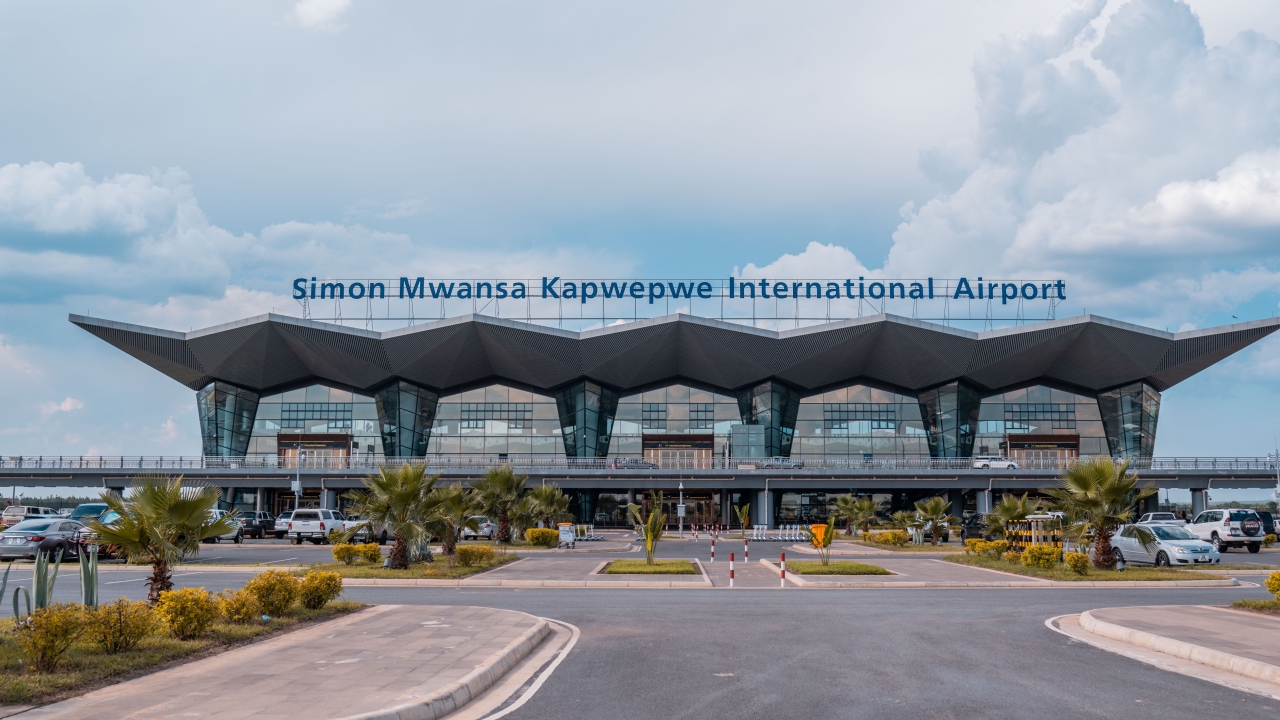The gateway to zambition
This August will see Simon Mwansa Kapwepwe International Airport (SMKIA), which is operated by Zambia Airports Corporation Limited (ZACL), celebrate its third anniversary since opening its doors in 2021 and replacing the original Ndola Airport.

Simon Mwansa Kapwepwe Airport: The airport regularly holds forums for local residents to disseminate information about current and future plans. Image: ZACL
Named after the nation’s former vice president, the US$397 million greenfield airport serves as a gateway to Zambia’s copperbelt mining province on the border with the Democratic Republic of Congo and was designed and constructed by the Aviation Industry Corporation of China (AVIC International).
Airport Manager, Mwamba Patience Nakambale Phiri, told African Aerospace: “The Zambian Government has been supporting growth across the country’s aviation sector and the new airport is aligned with those plans for growth.
“The original airport [which is the oldest in the country and currently belongs to the Zambian Air Force] was built in 1938 as a military base for the British Army before being converted in the 1950s for civil operations.
“Various upgrades and transformations were made over the years, but it was old and had an ageing infrastructure. The objective of building a new air transport hub for the region was to enhance and reimagine the passenger experience with a focus on safe, secure, seamless air travel and sustainable growth.”
Nakambale has been managing the airport since October 2022. Her background is originally in marketing and banking, but she joined ZACL in 2009 working as head of customer services at Harry Mwanga Nkumbula International Airport in Livingstone and then as deputy airport manager at Lusaka’s Kenneth Kaunda International Airport in 2015, before joining Simon Mwansa Kapwepwe. “I sort of fell into aviation out of curiosity, but the global industry is changing and women are increasingly rising to the top,” she said.
While the airport is state-owned, the government is hands-off in terms of the day-to-day operations.
“Their focus is on ensuring the airports across ZACL’s portfolio provide exceptional services and build connectivity for the region, but they really leave us to function independently as the experts when it comes to managing operations,” said Nakambale.
“They were however instrumental when SMKIA’s new terminal was being constructed in terms of engaging with, compensating and resettling the community that previously occupied the 2,000-acre site the airport is built on.”
She added that community engagement is one of the key and ongoing considerations when building a new airport. “Those living locally need to be involved from the start and their concerns must be listened to and addressed.”
The airport regularly holds forums for local residents to disseminate information about current and future plans.
Alongside community engagement, Nakambale revealed that other factors to consider when constructing a greenfield airport include site selection and making sure the chosen location has a minimal environmental impact and preserves biodiversity.
Ensuring good surface access is also key and if that doesn’t exist already, then Patience emphasised the need for a robust understanding of the planning requirements "for transport infrastructure, such as road and rail networks. With the industry’s net zero targets, the aim should also be to design infrastructure that optimises energy efficiency and is aligned with sustainable growth." she added.
“Incorporating features such as natural lighting, energy-efficient HVAC filter systems and renewable energy sources including solar panels and wind turbines should be key considerations for a new airport build.

Water conservation is also important and in countries with high rainfall, rainwater harvesting should be factored into construction plans. Similarly, effective waste management and exploring waste-to-energy initiatives is also key,” she continued.
“At SKMIA, sustainability was at the core of the build from the very start. Large floor-to-ceiling windows in the terminal provide plenty of natural lighting and create a modern, airy environment.
“In addition, we extract and recycle our own water to use for irrigation and cleaning. As well as more efficient operations, these initiatives have also helped keep costs down,” she added.
While the airport isn’t currently using renewable energy sources, it is something that’s being explored.
With a capacity of one million passengers per annum, enhancing and reimagining the passenger experience was another key driver behind the new airport design.
“We want passengers to look forward to travelling through Zambia, whether they’re transiting or stopping here, it was important that they felt this sense of excitement with a bright and airy terminal and are happy to fly here again,” said Patience.
Part of that reimagined journey was also creating a seamless passenger processing experience in terms of check-in, baggage handling and border control. The airport has partnered with SITA for its airport management operations systems with a focus on automated services.
Nakambale explained that while much of the inbound passenger traffic currently passing through SMKIA is business travellers visiting the surrounding mining region, there is also a mix of tourists and leisure passengers as well as plenty of transiting customers flying on elsewhere.
“As a landlocked country situated in central Africa, Zambia has a fair number of overflights and technical flights heading from North to South and vice versa and stopping at our airport for refuelling or emergencies.
“That gives us a good outlook of where we should be focusing our efforts in terms of growth. In terms of inbound traffic, it’s not just miners flying in, but also businessmen and expatriates.
“Cargo is also a flourishing market for us and we are forecasting growth in this space in line with growth in the mining sector.”
Looking ahead, Nakambale asserted that the outlook for Zambia’s airport sector looks strong. The airport is working alongside its existing and new airline partners to develop its destination network and the government has been hugely supportive.
“A large part of the government’s work has been to create initiatives that will attract visitors, while ZACL will continue to engage key stakeholders in the industry and focus on seamless air travel. I am excited about the impending growth and bright future we have to look forward to at our airport.”
Stay up to date
Subscribe to the free Times Aerospace newsletter and receive the latest content every week. We'll never share your email address.


